Dec 25, 2025
Dec 25, 2025
From the sand dunes we drove further north on this one day trip. Along the way, most of the vegetation was stunted. But flowering trees, like pretty sentinels dotting the wayside, cheered us en route...
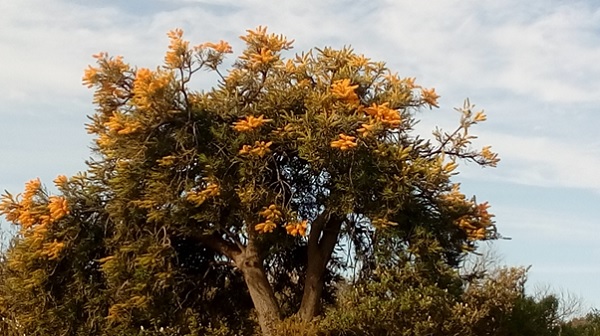
...to the overwhelming desert of ancient limestone pillars, scattered across approximately 190 hectares, 60 meters above sea level and just a short distance away from the ocean. Coming upon this alien looking place, with its millennia old history, one’s reaction can only be of reverent awe.
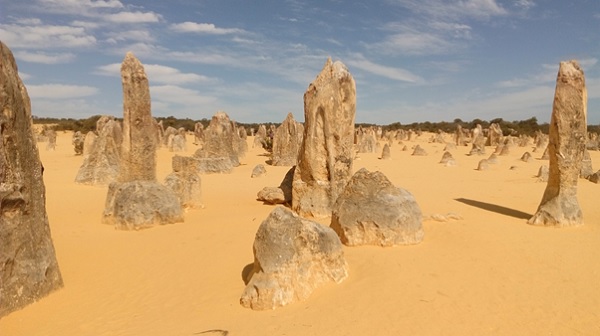
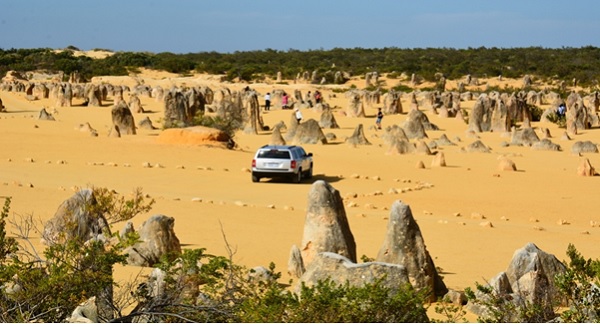
One can drive right into the desert, along a four-meter loop carefully demarcated with stones. There are parking spaces delineated where one can stop, get out and roam among these pillars to enjoy a richer experience of the landscape.
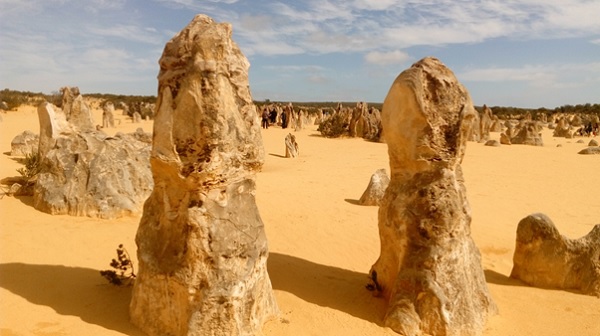
They have been rightly nicknamed “The Rock Stars of the Outback”. These are fragile structures and we need to treat them with the respect and care they deserve, without vandalising or disturbing their natural environment. The raw material that goes into forming these pillars is lime-rich sand and ancient sea-shells, but there are three theories regarding their formation and no consensus has been reached so far.
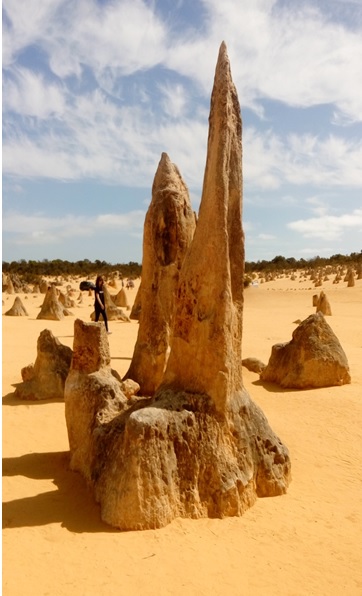
These amazing natural structures vary in size and shape, some growing from 3.5 to 5 meters tall with jagged points, while some have rounded tops.
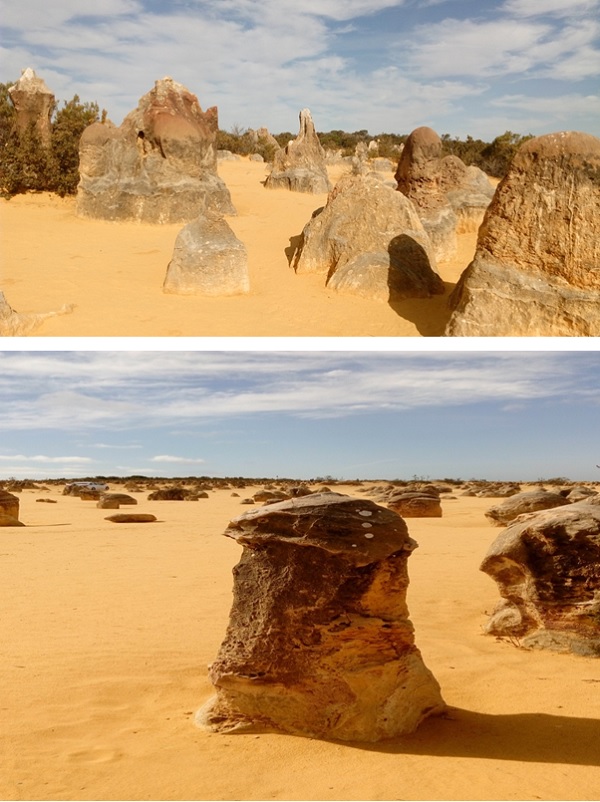
Some pinnacles have a mushroom–like shape formed because of calcrete capping, which is harder than the limestone below it and so takes longer to erode.
Per britannica.com; Calcrete, also called Hardpan, calcium-rich duricrust, a hardened layer in or on a soil. It is formed on calcareous materials as a result of climatic fluctuations in arid and semiarid regions. Calcite is dissolved in groundwater and, under drying conditions, is precipitated as the water evaporates at the surface.
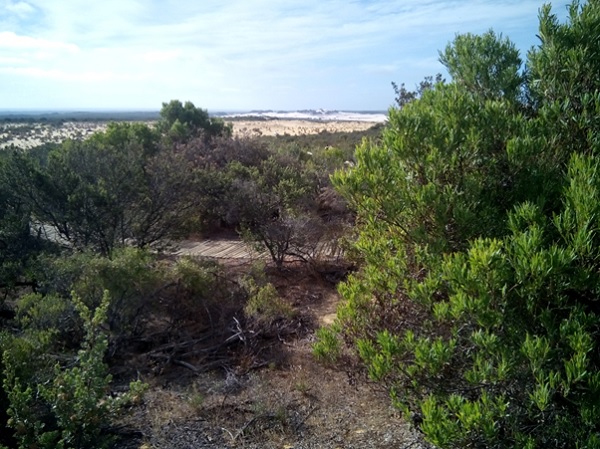
This spectacular desert, with its shrubbery is home to many native birds and animals like emus, black-shouldered kite, white-tailed black cockatoos, sand goannas, grey kangaroos, carpet python, bobtail lizards, etc. Unfortunately we did not spot any of these.
From here we drove back towards Perth with one more stop for a tryst with ‘Living Fossils” the modern versions of earth’s most ancient life-forms: living marine stromatolites.
Images copyright Daisy Wadia & Rajeev Ghodke
05-Feb-2017
More by : Shernaz Wadia